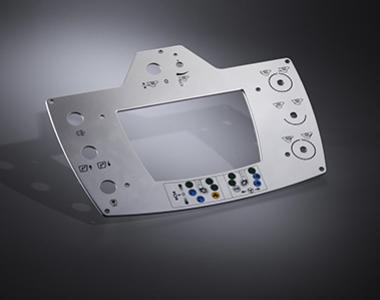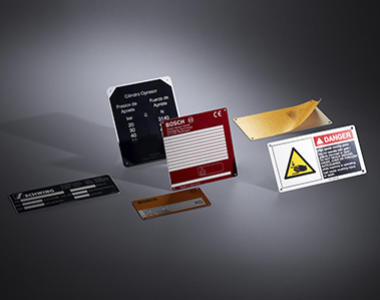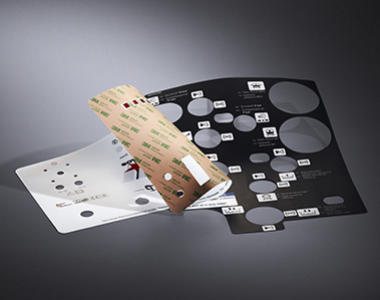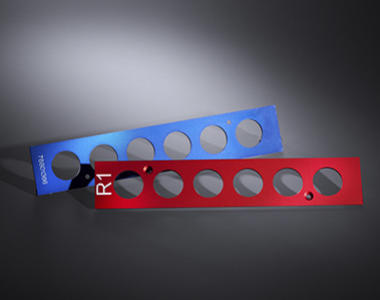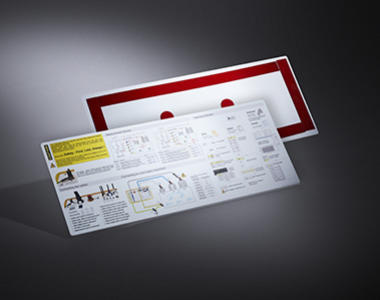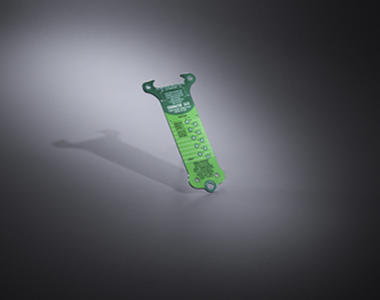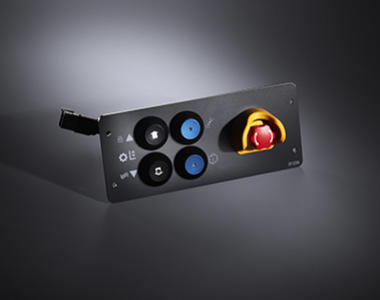Front panels
- highest durability
- low weight
- good mechanical workability
- favourable purchase price
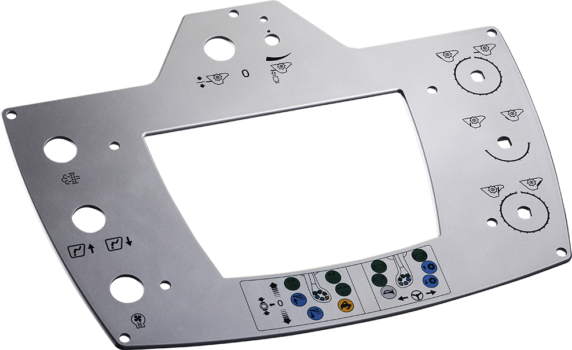
 Product characteristics:
Product characteristics:
Aluminium is a material which is light and easy to machine, making it particularly suitable for all standard front panel moulds.
Depending on the alloy, aluminium has a weight advantage of approx. 50 - 70% compared with stainless steel, and is therefore the most commonly used material for front panels in many applications due to the simpler mechanical processing possibilities. For the electronics sector, it is possible to have the reverse side raw and/or reverse side
raw and passivated. Front panels can also be laminated with a printed or backprinted film for decorative purposes.
 Advantages
Advantages
- highest durability & light weight
- competitive purchase price & economical large series production using automated processes
- fast and inexpensive production of small quantities using stamping or milling
- front panels can easily be printed on both sides
- depending on the application, the machining edges are blank or the whole part is fully anodised
 Printing process
Printing process
Anodised underprint
- Anodised underprinting is only possible with aluminium
- The printing ink is embedded in the upper anodised layer by 8-10 ym
- White not possible as colour
- Scratch and solvent-resistant
- black is UV-resistant / colours are only partially UV-resistant<
- Heat resistance anodised underprint approx. 115 °C / destruction at approx. 500 °C MORE INFORMATION ON ANODISED UNDERPRINT<
Overprint
- Overprint is basically possible with any print medium (aluminium, stainless steel, brass, plastics)
- The ink is applied to the print medium / and baked on if required - white as an ink is possible
- The ink is not scratch-resistant and only partially solvent-resistant
- The ink is UV-resistant
- Heat resistance depends on the ink composition and the printing medium to which the ink is applied
 Illustration
Illustration
Anodised underprint and digital anodised underprint process
 Materials
Materials
Stainless steel
- Stainless steel V2A (1.4301)
- Thickness 0.5 mm surface glossy
- Thickness 0.8 to 2.0 mm surface grain 240
- Stainless steel V4A (1.4571)
- Thickness 0.8 to 2.0 mm
- Surface grain 240
Aluminium
- Aluminum AlMg 3 / H22
- Thickness 0.5 to 15 mm
- Raw, bright rolled
- Silver C-0 satin anodized
- Black C-35 satin anodized
- Brown C-34 satin anodized
- Bronze C-31 / C32 / C-33 satin anodized
- Silver C-0 UVD (uncompacted) satin anodized
- Aluminum composite panels (Dibond)
- Thickness 2 to 4 mm
- White on both sides, core black
Plastic
- Acrylic glass GS transparent
- Thickness 1 to 10 mm
- PVC hard
- Thickness 0.8 to 12 mm
- white or grey
- plotter foils
- Oracle 751C
- Thickness 0.06mm
- Different colors
- Kömacel rigid foam
- Thickness 5 + 10 mm
- Color white
- Engraving materials 2-layer
- ABS material
- Different colors
- Thickness 0.8 to 2.0 mm
- Engraving materials 3-layer
- PVC material
- Different colors
- Thickness 0.8 to 2.0 mm
- Polyester films (PES)
- Matted front, smooth back
- Front / back transparent smooth (touch panel suitable)
- Thickness 0.15 / 0.20 / 0.25 mm
- Suitable for digital printing and screen printing
- Clear coat possible on the front
- Formica / melamine
- Different colors
- Thickness 0.8 to 3.0 mm
- Polycarbonate foils (PC-Lexan)
- Matted front, smooth back
- Thickness 0.25 / 0.375 / 0.5 mm
- Silk screen printing process only
 Surfaces
Surfaces
Anodised: silk matt, raw
Brass: bright rolled, ground, brushed
Stainless steel: bright rolled, grain 240
Brushed painted: according to customer requirements
Powder coated: according to customer requirements
 Material thicknesses
Material thicknesses
Aluminium: 0.5 to 15 mm.
Plastics: 0.8 to 4 mm & acrylic glass: 0.5 to 10 mm.
Stainless steel: 0.5 to 6 mm.
Brass: 0.5 to 5 mm.
 Moulds
Moulds
Almost any geometry can be produced by milling or stamping.
In some cases there are standard geometries which can be covered by existing stamping tools, e.g. round holes Ø 22.5 mm or with a locking nose.
 Other
Other
Seals can be glued into prefabricated grooves
Press-in bolts/Nuts can be pressed in
Press-in bolts in the blind hole can be concealed in aluminium from 4 mm material thickness
Application of welding studs / welding bushes is possible without any problems
Passivation on the back or on the entire component, chrome 6 free, is possible
 Examples
Examples
If you have question we will be happy to help!
All contact persons
Andreas Altenburg
Managing Director
Phone: +49 (0)2661 95 51 25
Mail: info@schilder-kuenkler.de






